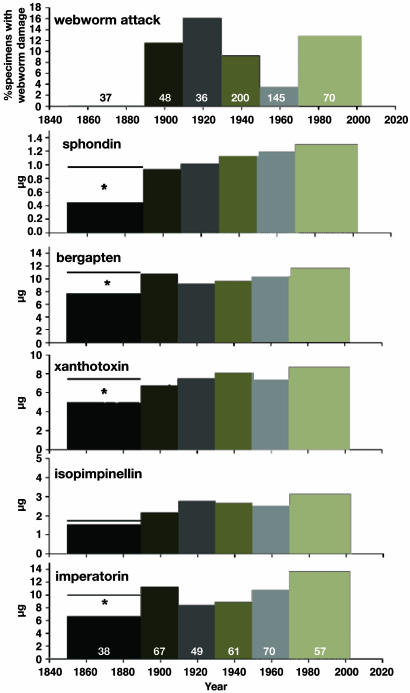Fig. 2.
Webworm attack and chemical defenses in wild parsnip herbarium specimens. (Top) The percentage of North American wild parsnip specimens exhibiting webworm damage (numbers are sample sizes). In the sample period of 1850–1889, none of the 37 specimens displayed webworm damage. During the period of 1890–1909, the frequency of specimen damage increased marginally (one-sided Fisher's exact test, P = 0.052). By the period 1910–1929, specimens damaged by webworms increased significantly compared with specimens collected during the period 1850–1889 (one-sided Fisher's exact test, P = 0.025). Seed content (in μg per seed, for five furanocoumarins) is presented in the lower five histograms. The sample sizes for all of the furanocoumarins are the same as those listed for imperatorin. Mean seed mass did not vary across time periods (one-way ANOVA, P = 0.574) and cannot account for the observed changes in furanocoumarin content. For the earliest period, a line above the bar represents mean content of specimens collected in Europe between 1820 and 1889 (n = 58). *, Significant difference between the European and North American samples (all t test P values < 0.05). For all five furanocoumarins, there was a significant difference in furanocoumarin content between the earliest period and the subsequent period from 1890–1909 (all t test P values < 0.05).

